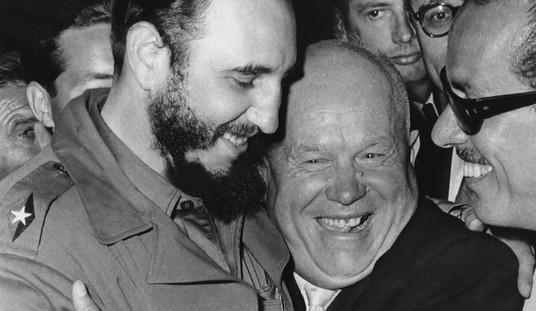The surprising thing about King v. Burwell, is not that subsidies were upheld. That was always a possibility (although not one I favored). The surprise, as with NFIB before it, was how Chief Justice Roberts did it. His decisions on Obamacare give one the impression that he’s not really paying attention to the arguments in front of him. In NFIB, the fight was overwhelmingly focused on whether the individual mandate was authorized by the commerce clause of the Constitution. Then Roberts came out of nowhere to hold that the individual mandate was authorized under the tax clause. It was a gut-punch: we’d won on the commerce clause and lost because of something so absurd that no one was talking about it.
Today in King, the Chief Justice, joined by Justice Kennedy and their liberal-appointed colleagues, does it again. Until today, the debate about whether the IRS had properly promulgated the rule providing subsidies to customers who use state exchanges was entirely about the application of Chevron deference. The decades-old case of Chevron v. NRDC provided a framework for determining what happens when Congress passes poorly-written laws. Where Congress passes a law that is ambiguous and an agency resolves that ambiguity by interpretative rule or judgment, Chevron instructs the courts to defer to the agency’s interpretation so long as it is reasonable. The reasonable standard is fairly easy for agencies to meet. That’s why it’s called Chevron deference. Chevron deference set things up so that American governance, at least so far as ambiguous statutes go, is a sharing of power between Congress and the executive agencies that Congress has created.
Chief Justice Roberts in King has decided that, at least so far as Obamacare subsidies go, Chevron deference does not apply. To say that this judgment and reasoning comes out of nowhere understates the degree to which no one expected it. Whereas the parties were arguing about whether the phrase “as established by the State” was ambiguous and, if so, whether the IRS interpretation was reasonable; in the Chief Justice’s mind, the issue was whether the phrase was ambiguous and, if so, what he would like it to mean. In so doing, he tossed aside decades of jurisprudence on the basis of scant legal reasoning. Here’s the entirety of his explanation for why the ordinary rule of Chevron does not apply to Obamacare:
The tax credits are among the Act’s key reforms, involving billions of dollars in spending each year and affecting the price of health insurance for millions of people. Whether those credits are available on Federal Exchanges is thus a question of deep “economic and political significance” that is central to this statutory scheme; had Congress wished to assign that question to an agency, it surely would have done so expressly. Utility Air Regulatory Group v. EPA, 573 U. S. ___, ___ (2014) (slip op., at 19) (quoting Brown & Williamson, 529 U. S., at 160). It is especially unlikely that Congress would have delegated this decision to the IRS, which has no expertise in crafting health insurance policy of this sort. See Gonzales v. Oregon, 546 U. S. 243, 266–267 (2006). This is not a case for the IRS.
But this reasoning could apply to any number of statutes being interpreted by any number of agencies. Amusingly, the high court similarly has “no expertise in crafting health insurance policy of this sort.” That doesn’t stop the Chief Justice, who goes on in the next sentence to write, without any apparent recognition of the irony:
It is instead our task to determine the correct reading of Section 36B.
This represents a massive shift in power away from the executive branch and to the judiciary. Whereas Chevron, which the Supreme Court has not overturned, recognized that Congress and the executive branch agencies established by Congress get first crack at interpreting ambiguous laws, King now pushes the executive branch aside and arrogates that authority for itself. For the moment, that appropriation is limited to Obamacare subsidies. But it would be foolish to expect the jurisdiction-greedy lower courts not to seize on this fresh excuse to ignore federal agencies when they want to.
One last thing. Because the Supreme Court has plucked Obamacare out of the normal Chevron framework, the IRS cannot now rescind the regulation, claiming it has a new interpretation of the ambiguous statute. If you’re wondering why the Chief Justice and the others went so far out of bounds, that’s your answer: they don’t want a President Rubio undoing the subsidies, which, applying Chevron deference, would have been perfectly reasonable to do. With Obamacare, the Court is saying the IRS cannot change its mind because the Court has already made its mind up.
There is plenty more wrong with the Chief Justice Roberts’ decision in King, including that the phrase “established by the State” was not actually ambiguous in the first place. In the course of ruminating on the question, however, he also tossed aside a pair of centuries-old canons of statutory interpretation (see here) because they inconveniently also led to the conclusion that “established by the State” does not mean “established by the Federal government.” The majority’s casual abuse of precedent and departure from ordinary rules of statutory interpretation is not a good sign for decisions to come.








Join the conversation as a VIP Member